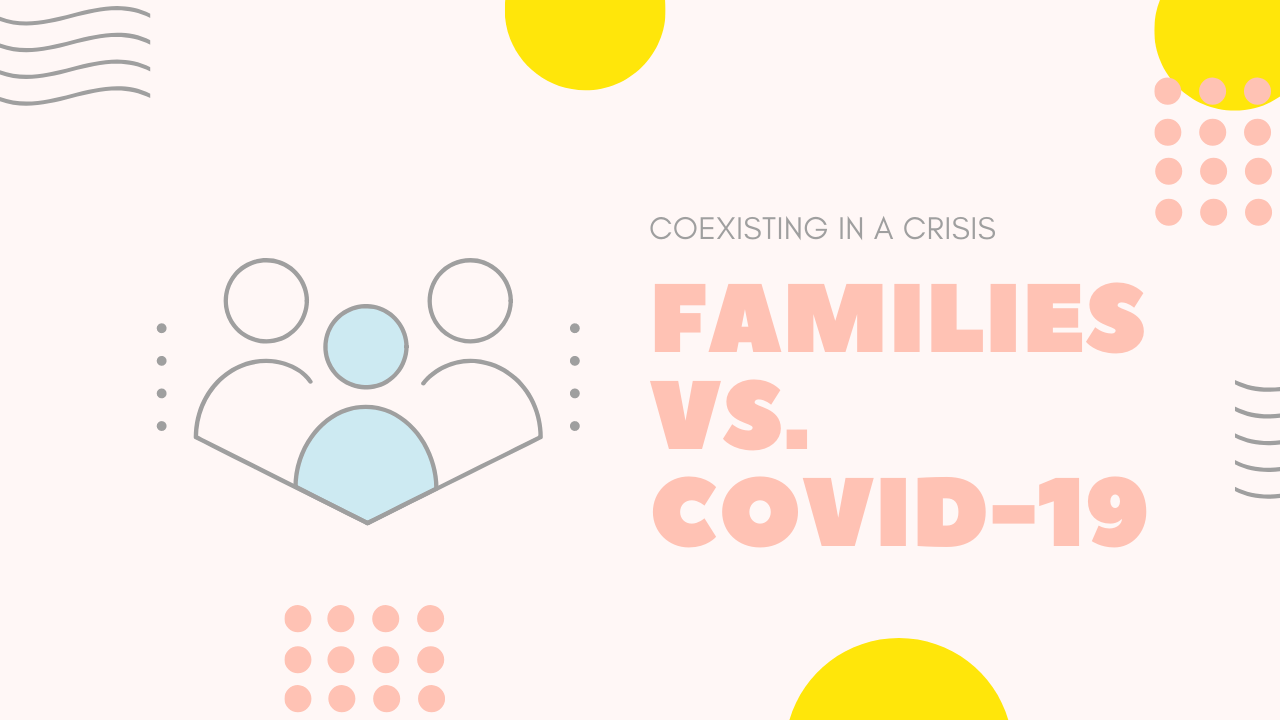Families in Quarantine
Families Learn to Coexist in a Crisis
 For the past few months, the number of people affected by the COVID-19 pandemic has increased exponentially, and with it, governments across the world have had to take steps to minimize the spread of the coronavirus. One of the most notable steps is social isolation, which entails remaining in your homes, cutting nonessential social gatherings, and maintaining a distance of six feet away from others when outside. This new policy has had a differing effect on those in isolation, especially those who are living with their families. Among this group are our very own students at Liberty.
For the past few months, the number of people affected by the COVID-19 pandemic has increased exponentially, and with it, governments across the world have had to take steps to minimize the spread of the coronavirus. One of the most notable steps is social isolation, which entails remaining in your homes, cutting nonessential social gatherings, and maintaining a distance of six feet away from others when outside. This new policy has had a differing effect on those in isolation, especially those who are living with their families. Among this group are our very own students at Liberty.
For some, the transition has been more natural than others.
“My family has always made it a priority to have family time pretty much all the time even before quarantine,” sophomore Alyson Hively said. “But we definitely interact even more than we used to.”
For others, the change is more drastic, like for junior Jonah Tate.
“I see them a lot more now, 3 or 4 hours more. I want to see people and do stuff again,” Tate said. “[I want to] have work, and be in class.”
Regardless of if the transition has been easy or difficult, this new way of life is different to everyone, and the threat of cabin fever looms.
“Sometimes we have a hard time getting along [when] someone is in a bad mood,” reports Hively. “We’ve all come to the conclusion that that is how it is and we usually all get along very well.” This is a common occurrence for those in isolation at the moment, and people have often taken to the internet to voice their familial woes as cabin fever begins to set in.
Sometimes we are left to wonder, why are we feeling this way? Why do we feel so annoyed around the people and things we love? For further research, St. Louis psychologist Dr. Kelli Huber answered further questions in an email interview for questions that might be arising during this time.

What is it that makes being with family so stressful during this time? Huber answers, “More proximity and exposure than usual. Their families’ usual antics (whatever those may be) that we can typically get in small doses, we now get in very large doses, and they become amplified in our eyes a bit.” Students who are used to seeing their families for a few hours are having to adapt to being with them for hours more. A frequent feeling among those inside is a feeling of being trapped in their own homes. Why?
“Humans like predictability and certainty. The virus is a bit of an enemy of that and can lead to feelings of lack of control. What I’ve found helpful is to a) try to re-frame this time as an opportunity to practice some resiliency around being comfortable with the unknown, and b), in the meantime, practice a routine to help me gain some control over what I can.” replies Huber. Some students are ahead on this and have developed ways to cope at home to deal with the feelings of stress.
“I cope by reading my Bible and good apologetic books that keep me thinking,” provides Hively as an example.
Tate offers another, saying “Either I’m enjoying [my down time], or having a breakdown. There is no in-between.”
Sometimes, family coping mechanisms can clash.
“This is also a time of heightened stress and uncertainty,” Huber said. “Everyone is coping differently which could lead family members to act a bit differently than usual and get on our nerves. The more we can cognitively reframe things as being about the situation/crisis we’re in vs. being about ‘us’ as people or as a family unit, that can be a bit helpful. Beyond that, when the fam is especially on the nerves, getting a little separation can be helpful too. [My husband] and I also have a fun game we play based on the tweet below. We’ve named our coworker Barnaby.”
Whether or not we can tolerate our families, social isolation means that both technology and families are important to lean onto as a means of social interaction to prevent long-lasting stress. So if you have the time, try to ride out this strange period with your family. They just might be waiting for you.

